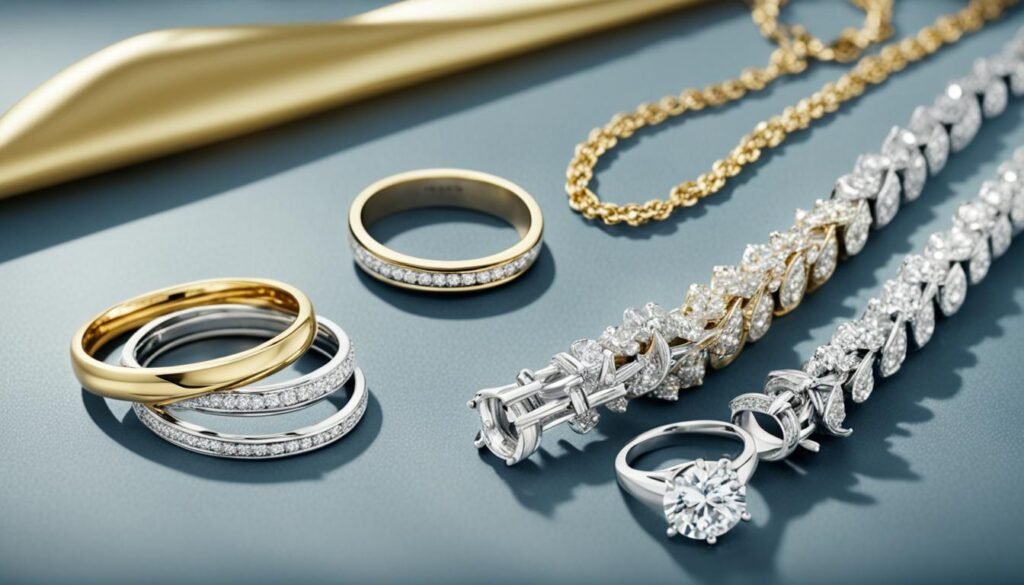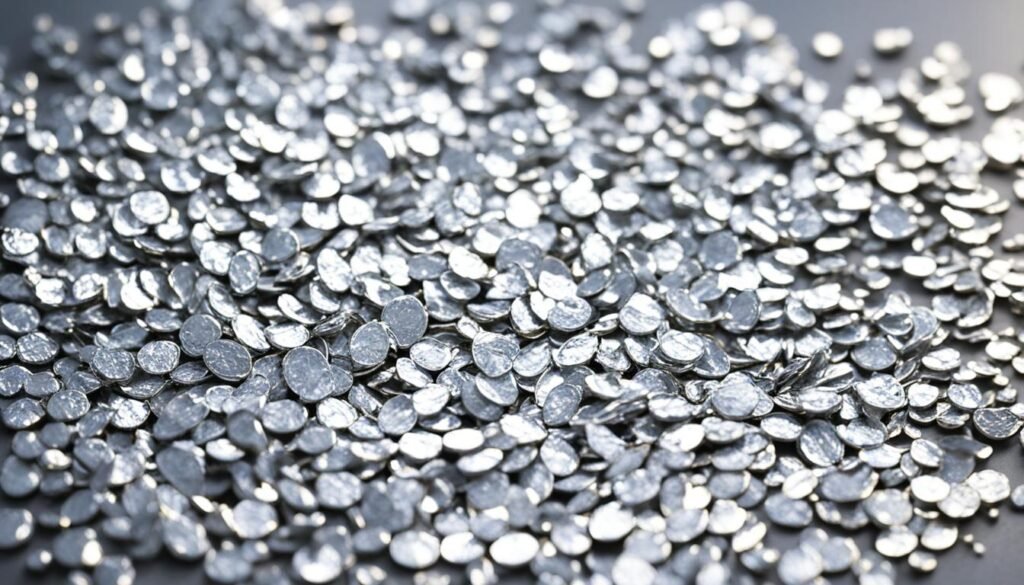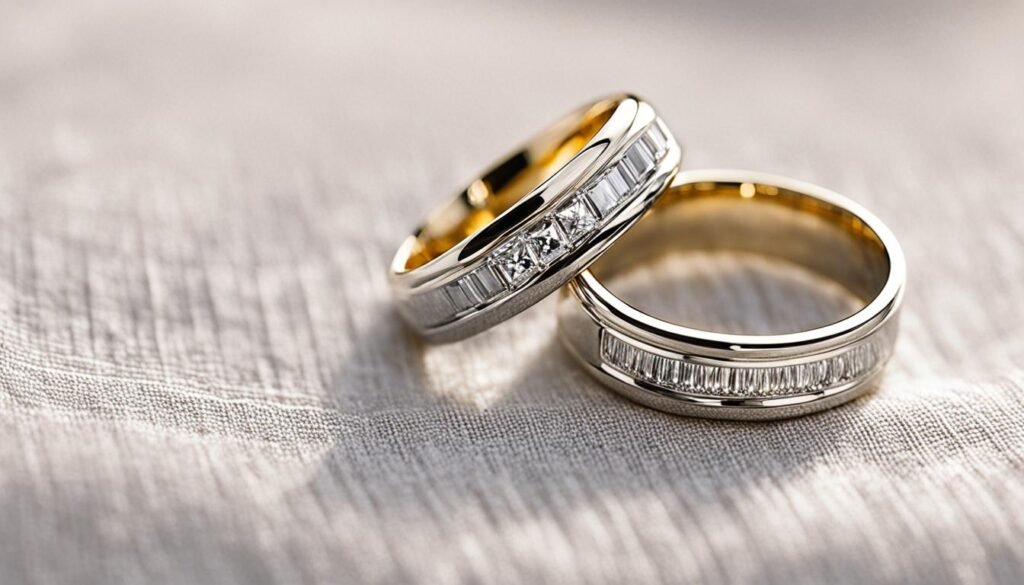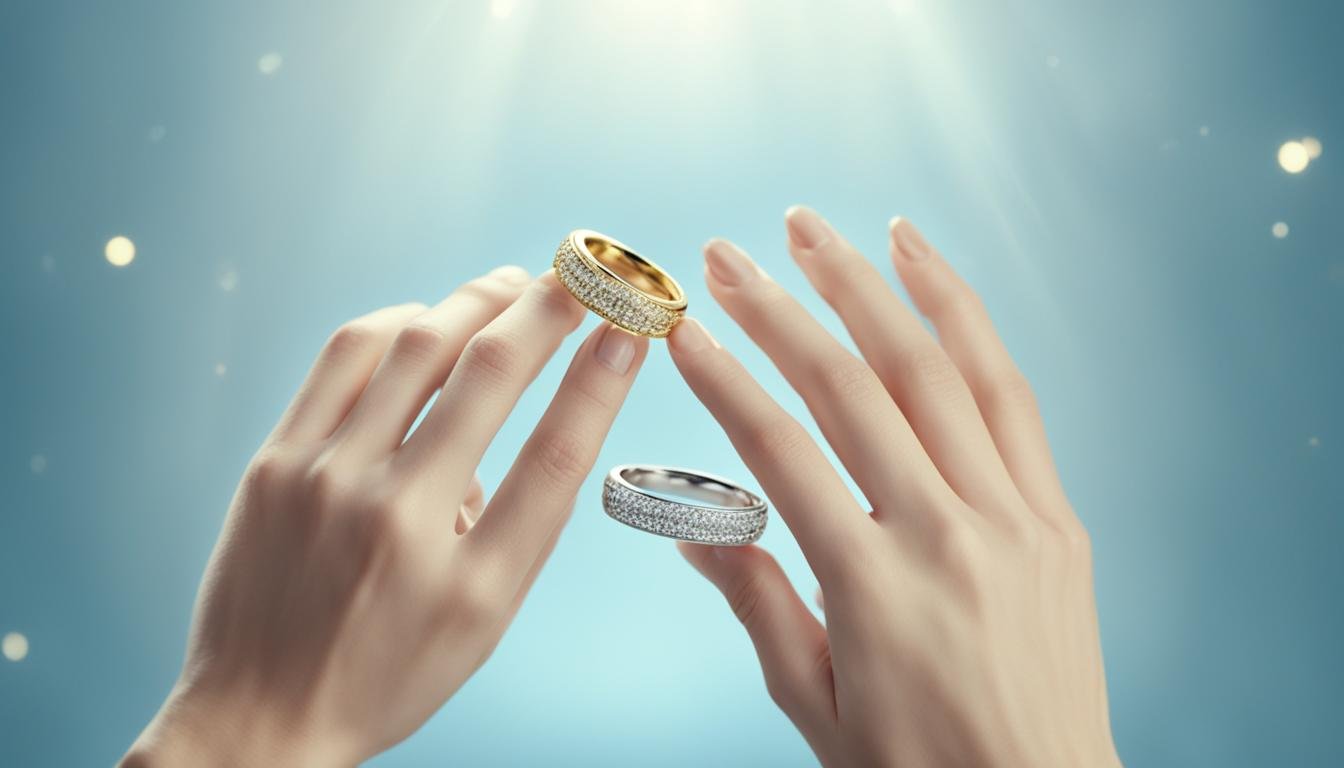Platinum and gold have long been revered as luxurious and valuable metals, adorning jewelry and capturing our attention with their radiant beauty.
But when it comes to choosing between these two precious metals, is platinum truly the superior choice? Are there inherent differences that make platinum shine brighter than gold?
Key Takeaways about Is Platinum Better Than Gold
- Platinum and gold have unique properties that set them apart from each other.
- Durability, aesthetics, composition, and maintenance are key factors to consider when choosing between platinum and gold.
- Platinum offers hypoallergenic benefits and is rarer than gold.
- Gold has a timeless appeal and is often more affordable than platinum.
- Your personal style and preferences play a crucial role in determining the better choice between platinum and gold.
We will delve deep into the world of platinum and gold to uncover the facts and uncover the truth. We will explore their durability, aesthetics, composition, maintenance, and more.
So, whether you’re considering a stunning platinum piece or a classic gold creation, join us on this journey to discover which metal truly outshines the other.
Unveiling the Durability of Precious Metals
When it comes to precious metals, durability is a key factor to consider. Understanding how these metals hold up under different conditions can help you make an informed decision when choosing between them. In this section, we will delve into the durability of platinum and gold, highlighting their resistance to pressure and their structural stability.
WSU’s Shocking Discovery: Platinum Withstands Extreme Pressure
In a groundbreaking study conducted at WSU’s Institute for Shock Physics, researchers made a surprising discovery about the durability of platinum and gold. It was found that platinum exhibits remarkable resistance to extreme pressure, retaining its atomic structure even under immense force. This durability makes platinum an excellent choice for applications where strength and resilience are crucial.
Comparing Structural Stability Under Immense Pressure
To further explore the durability of precious metals, a comparison was made between platinum and gold’s structural stability under immense pressure. The results revealed that while gold is also a resilient metal, platinum outperforms it in terms of maintaining its structural integrity. This means that platinum is less likely to deform or lose its shape when subjected to high levels of pressure.
Insights from the Dynamic Compression Sector Experiments
The experiments conducted at the Dynamic Compression Sector provided valuable insights into the behavior of platinum and gold under extreme pressures. These experiments involved subjecting the metals to intense shocks and measuring their response. The findings shed light on the impressive pressure resistance of platinum and highlight its suitability for applications that require exceptional durability.
The Aesthetic Appeal: Platinum vs. Gold in Jewelry
When it comes to jewelry, both platinum and gold have their unique aesthetic appeal. Platinum’s silvery-white hue exudes a sense of understated elegance, while gold’s warm yellow color has a timeless allure. The choice between platinum and gold in jewelry often comes down to personal style and preference.

Platinum jewelry offers a sleek and modern look, complementing contemporary and minimalist styles. Its cool tone pairs well with various gemstones, enhancing their brilliance. Platinum’s subtle sheen also beautifully contrasts with diamonds, allowing their natural sparkle to take center stage.
On the other hand, gold jewelry exudes a classic and luxurious feel. Its warm tone is synonymous with sophistication and opulence. Gold can be easily combined with other metals, making it versatile and suitable for different designs and settings. Whether it’s a delicate necklace or a statement ring, gold jewelry has a timeless appeal that withstands changing trends.
In terms of skin tone, platinum and gold can flatter different complexions. Cool-toned platinum is often favored by those with fair or light skin, as it enhances their natural coloring. Warm-toned gold, on the other hand, can complement warmer skin tones, bringing out a radiant glow. However, these are just general guidelines, and ultimately, personal preference plays a significant role in choosing the metal that best suits an individual’s skin tone.
Whether you prefer the sleek elegance of platinum or the timeless allure of gold, both metals offer distinct aesthetics in jewelry. The choice between platinum and gold ultimately comes down to personal style, desired look, and how the metal complements individual features and preferences.
Understanding the Composition of Platinum and Gold
Platinum and gold are both precious metals with unique compositions that contribute to their distinct properties. In this section, we will explore the composition of these metals and delve into the intricate details that make them so valuable.
What Constitutes White Gold and Its Aging Process
White gold is an alloy that is created by mixing pure gold with other metals such as nickel, palladium, or silver. This mixture gives white gold its distinct color, which mimics the appearance of platinum. However, it is important to note that white gold is naturally yellow, and the white color is achieved through the plating process.
Over time, the plating on white gold jewelry may wear off, revealing the yellowish hue of the underlying gold. As such, white gold jewelry may require periodic re-plating to maintain its pristine appearance.

The Purity and Composition of Platinum
Platinum is renowned for its high level of purity. In jewelry, platinum is typically 95% pure, meaning it contains 95 parts platinum and 5 parts other metals. These additional metals, such as iridium, palladium, or ruthenium, are added to enhance the durability and strength of platinum.
What sets platinum apart is its hypoallergenic nature, making it an excellent choice for those with sensitive skin. The purity of platinum ensures that it rarely causes any allergic reactions, making it a safe and comfortable option for everyday wear.
Long-Term Care and Maintenance Explored
To keep your precious metal jewelry looking its best, proper care and maintenance are essential. In this section, we will explore the specific maintenance needs of both white gold and platinum, providing you with valuable insights on how to keep each metal in optimal condition. Additionally, we will debunk common myths surrounding the durability and care of platinum and gold, providing you with accurate information to ensure the longevity of your jewelry.
Maintenance Needs for White Gold vs. Platinum
White gold and platinum require slightly different maintenance routines to maintain their shine and durability. It is important to understand these specific needs to ensure that your jewelry retains its beauty for years to come. While white gold may require occasional rhodium plating to maintain its bright white color, platinum maintains its natural white hue without any additional treatment.
Both metals can be cleaned with mild soapy water and a soft brush. However, abrasive cleaners should be avoided, as they can scratch the surface of the metal. Regular professional cleaning and inspections can help identify any potential issues and keep your jewelry in top condition.
Debunking Myths on Durability and Care
There are several myths surrounding the durability and care of platinum and gold jewelry. It is important to debunk these myths to ensure that you have accurate information when caring for your precious pieces.
- Myth: Platinum is more durable than gold. While platinum’s superior durability is well-known, gold is also a durable metal for everyday wear. Both metals can withstand normal wear and tear without losing their structural integrity. However, they may show signs of wear over time, such as surface scratches, which can be polished by a professional jeweler to restore their original luster.
- Myth: Platinum requires less maintenance than gold. While platinum is known for its low maintenance nature, gold jewelry also requires regular care to keep it looking its best. Both metals benefit from routine cleaning and inspections to maintain their shine and durability.
- Myth: Gold is less prone to damage than platinum. While platinum is a highly durable metal, gold is also a strong and resilient choice for jewelry. With proper care, both metals can withstand everyday wear and maintain their beauty for years.
By debunking these myths, it becomes clear that both white gold and platinum can be excellent choices for durable and long-lasting jewelry. With proper care and maintenance, your precious metal pieces will continue to showcase their beauty and elegance for generations to come.

Comparing Costs: Platinum’s Value Versus Gold’s Price Tag
The cost of a metal is an important consideration when choosing between platinum and gold. Understanding the financial aspect of platinum and gold will help you make an informed decision based on your budget and investment goals.
Let’s compare the value of platinum and the price of gold to gain a better understanding of their costs.
Platinum is known for its rarity and durability, making it highly valued in the jewelry market. Its scarcity contributes to its higher cost compared to gold. Platinum’s unique properties and limited supply result in a premium price, making it an investment for those who prioritize long-term value.
On the other hand, gold has been a symbol of wealth and luxury for centuries. It holds historical significance and is widely recognized as a safe haven investment. The price of gold is influenced by various factors, including economic conditions, market demand, and geopolitical events. While gold is generally more affordable than platinum, its price can fluctuate significantly.
| Factors | Platinum | Gold |
|---|---|---|
| Rarity | Considered one of the rarest metals on Earth | Relatively abundant |
| Demand | Lower demand compared to gold | High demand as a global store of value |
| Purity | Usually at least 95% pure | Measured in karats (24K is pure gold) |
| Industrial Use | Widely used in various industries | Mainly used in jewelry and investment |
While the cost is an important factor, it’s essential to consider your personal preferences, style, and long-term goals. Whether you choose platinum or gold, both metals hold their value and offer unique characteristics that make them desirable choices.

Is Platinum Better Than Gold
Platinum offers several advantages over gold, making it a favorable choice for certain individuals. Let’s explore the hypoallergenic benefits of platinum and delve into the investment aspects of this precious metal.
Platinum’s Hypoallergenic Benefits
If you have metal allergies, platinum may be the ideal choice for you. Unlike gold, which often contains alloys like nickel that can cause skin irritations, platinum is hypoallergenic. Its purity and composition make it less likely to trigger allergic reactions, ensuring a comfortable wearing experience.
Investment Aspects: Rarity and Density Considerations
Platinum is renowned for its rarity, which contributes to its value as an investment. With a limited supply worldwide, platinum has a unique position in the market, making it an attractive option for investors seeking to diversify their portfolios. Additionally, platinum’s density, which is higher than that of gold, further enhances its appeal. The dense nature of platinum is indicative of its durability and makes it highly sought after in various industries, including jewelry and automotive manufacturing.
As we have explored, platinum’s hypoallergenic benefits and investment potential set it apart from gold. Whether you prioritize wearing jewelry without the risk of allergic reactions or seek a valuable investment piece, platinum offers a compelling alternative to its golden counterpart.
Practical Uses of Platinum and Gold in Industry
Platinum and gold are not only prized for their use in jewelry but also for their practical applications in various industries. These metals possess unique properties that make them extremely valuable in fields such as technology, medicine, and manufacturing.
One practical application of platinum is in the automotive industry. Platinum is used in catalytic converters, which help reduce harmful emissions from vehicles. Its ability to withstand high temperatures and chemical reactions makes it an ideal catalyst.
In the field of medicine, platinum finds its use in chemotherapy drugs. Certain platinum compounds, known as platinum-based drugs, are used to treat various types of cancer. These drugs work by disrupting the DNA replication process, preventing cancer cells from multiplying.
Gold also has several industrial uses. It is widely used in the electronics industry due to its excellent conductivity and resistance to corrosion. Gold wires are used in integrated circuits and other electronic components to ensure reliable and efficient performance.
In the aerospace industry, gold is used to coat spacecraft and satellites. The reflective properties of gold help regulate temperature and protect sensitive equipment from the harsh conditions of space.
Furthermore, both platinum and gold have applications in the field of renewable energy. Platinum is used as a catalyst in proton exchange membrane fuel cells, which are used to generate electricity from hydrogen. Gold, on the other hand, is used in solar panels to enhance their efficiency and durability.
Understanding the practical applications of platinum and gold in different industries provides valuable insights into their broader significance. These metals play a crucial role in advancing technology, improving healthcare, and contributing to sustainable energy solutions.
The Role of Alloys: Dissecting Gold and Platinum Mixtures
Alloys play a significant role in the characteristics of gold and platinum jewelry. These metals are rarely used in their pure form in jewelry-making due to their softness and malleability. Instead, they are combined with other elements to create alloys that enhance their durability, strength, and aesthetic qualities. By dissecting the mixtures used to create gold and platinum alloys, we can gain a better understanding of how they impact the final product.
Impact on Jewelry Aesthetics and Strength
The composition of alloys can greatly impact the aesthetics and strength of gold and platinum jewelry. Gold alloys, for example, can be created by combining gold with other metals such as copper, silver, or palladium. These additional metals alter the color, hardness, and durability of the gold, allowing jewelers to create a wide range of shades and finishes.
Platinum alloys, on the other hand, are often mixed with other platinum group metals like palladium, rhodium, or iridium. These alloys enhance the natural characteristics of platinum, including its high luster, density, and corrosion resistance. By adjusting the composition of the platinum alloy, jewelers can create different shades of platinum, such as white or rose, to suit the desired aesthetic.
In terms of strength, alloys add stability and durability to gold and platinum jewelry. The addition of other metals creates a stronger molecular structure, reducing the risk of deformation or damage. This is particularly important in pieces that are worn every day or subjected to frequent impact, such as engagement rings or bracelets.
Understanding Metal Allergies: Choosing the Right Material for Your Skin
Metal allergies can be a concern for some individuals, particularly when it comes to jewelry worn for extended periods. Allergies to nickel are relatively common, and since it is often used in gold alloys to improve workability and durability, it can cause skin irritation and allergic reactions.
Platinum, on the other hand, is known for its hypoallergenic properties. It is generally well-tolerated by most individuals, even those with sensitive skin or metal allergies. Platinum alloys are typically free from nickel or other common allergenic metals, making them a safer choice for those prone to irritation.
When choosing the right material for your skin, it is crucial to consider the composition of the alloys used in gold and platinum jewelry. If you have a known metal allergy, opting for platinum or a gold alloy that is nickel-free can help minimize the risk of skin reactions and discomfort.
| Alloy Component | Gold Alloys | Platinum Alloys |
|---|---|---|
| Copper | Used to create rose or pink gold | Used to enhance the hardness of platinum |
| Silver | Creates white gold when combined with gold | – |
| Palladium | Used to create white gold | Commonly mixed with platinum to improve workability |
| Rhodium | – | Creates a bright, reflective surface on platinum jewelry |
| Iridium | – | Enhances the density and durability of platinum |
Platinum and Gold’s Resilience to Fashion Trends
Fashion trends may come and go, but there are certain metals that stand the test of time. Platinum and gold are among these timeless metals that continue to be popular choices in the world of jewelry. Their enduring appeal and versatility make them trend-resistant metals that can complement various styles and adapt to different eras.
Platinum jewelry has been a symbol of luxury and elegance for centuries. Its silvery-white hue exudes a sense of understated beauty that transcends fleeting fads. Whether it’s a classic engagement ring or a statement necklace, platinum jewelry adds a touch of sophistication to any ensemble. Platinum’s timeless allure lies in its ability to effortlessly complement a wide range of skin tones and clothing styles.
Gold, with its warm yellow color, has also stood the test of time. It has been revered in many cultures for its beauty and significance. Gold jewelry has a certain timeless charm that appeals to individuals of all ages and backgrounds. Whether it’s a delicate bracelet or a bold pair of earrings, gold jewelry makes a statement that never goes out of style.
Both platinum and gold have the unique ability to adapt to changing fashion trends while maintaining their intrinsic value and appeal. They can be crafted into traditional, vintage-inspired designs or modern, contemporary styles, allowing you to express your personal style and create a look that is uniquely yours.
So, when it comes to choosing your next piece of jewelry, consider the enduring beauty of platinum and gold. These trend-resistant metals will not only enhance your style but also stand the test of time, becoming cherished heirlooms that can be passed down for generations to come.
Insider Insights from Jewelers and Metalworkers
Jewelers and metalworkers play a crucial role in the creation of exquisite platinum and gold jewelry. Their expertise and hands-on experience provide valuable insights into the craftsmanship and artistry involved in working with these precious metals. Let’s hear from the professionals themselves and gain a deeper understanding of their perspective on working with platinum and gold.
Jeweler’s Perspective on Working with Platinum and Gold
When it comes to working with platinum and gold, jewelers have firsthand knowledge of the unique characteristics and properties of these metals. They understand the challenges and intricacies involved in manipulating and shaping platinum and gold into stunning jewelry pieces.
“Platinum is known for its inherent strength and durability,” says renowned jeweler Emily Thompson. “It requires meticulous attention to detail and exceptional skill to work with platinum due to its density and hardness. However, the results are worth it, as platinum jewelry showcases unparalleled craftsmanship and longevity.”
In contrast, gold offers a different set of qualities that jewelers appreciate. Its malleability and versatility allow for intricate designs and delicate details that can’t be achieved with other metals. Gold’s warm, golden hue brings a timeless elegance to jewelry pieces, making it a favorite among many customers.
“Gold allows for endless creative possibilities,” explains master jeweler Marcus Reynolds. “Its softness makes it more pliable, enabling us to create elaborate designs and intricate patterns. The craftsmanship involved in gold jewelry is truly remarkable.”
Custom Craftsmanship: Metal Characteristics Influencing Design
The unique characteristics of platinum and gold directly influence the design decisions made by jewelers. The color, weight, and durability of these metals play a significant role in determining the overall aesthetic and functionality of a piece of jewelry.
Platinum’s naturally white color creates a striking contrast with diamonds and other gemstones, making it a popular choice for engagement rings and wedding bands. Its density and weight provide a luxurious feel, adding to the sense of elegance and quality in platinum jewelry.
On the other hand, gold’s rich color adds warmth and depth to jewelry designs. Its versatility allows for a wide range of styles, from classic and traditional to bold and contemporary. Whether it’s a delicate gold necklace or a statement gold bracelet, the craftsmanship in gold jewelry is evident in every piece.
Overall, jewelers consider the specific characteristics of each metal when creating custom pieces, ensuring that the design seamlessly integrates with the inherent qualities of platinum and gold.
As we conclude our exploration of jewelers’ insights and the influence of metal characteristics on design, we’ve gained a deeper appreciation for the craftsmanship and expertise involved in working with platinum and gold. From the strength and durability of platinum to the versatility and elegance of gold, these precious metals continue to inspire and captivate both professionals and jewelry enthusiasts alike. Now, let’s delve into the final section, where we summarize the key findings and considerations to guide you in choosing the perfect metal for your jewelry.
Conclusion
In conclusion, this article has provided a comprehensive overview of the scientific findings and market trends surrounding platinum and gold. Throughout the article, we have explored the durability, aesthetics, composition, and maintenance aspects of these two metals, offering valuable insights to help you make an informed decision when choosing your preferred metal.
From a scientific perspective, it has been established that platinum has superior durability compared to gold, thanks to its ability to withstand extreme pressure without compromising its atomic structure. This makes platinum an excellent choice for those seeking a metal that can withstand the test of time and maintain its integrity under various conditions.
On the other hand, gold offers its own allure with its warm yellow color and timeless appeal in jewelry. It has been deeply ingrained in human history and continues to be a popular choice for its intrinsic value and versatility. In choosing between platinum and gold, personal preference plays a significant role, as your individual style and skin tone may sway your decision.
However, it is crucial to consider the practical benefits of each metal. While platinum tends to be more expensive than gold, it offers hypoallergenic properties, making it an ideal choice for those with metal allergies. Moreover, platinum’s high level of purity and its alloys contribute to its overall quality and durability.
Ultimately, the decision between platinum and gold rests in your hands. By weighing the scientific findings, market trends, personal preference, and practical benefits, you can confidently choose the metal that best aligns with your style, values, and budget. Whether you opt for the enduring elegance of platinum or the timeless allure of gold, you can treasure your choice for years to come.
FAQ about Is Platinum Better Than Gold
Is platinum better than gold?
Platinum and gold have their unique qualities and appeal. The choice between platinum and gold ultimately depends on your personal preferences and needs.
What is the durability of platinum and gold?
Platinum has been found to withstand extreme pressure better than gold, retaining its atomic structure even under immense pressure. Gold also has good durability but may not be as resistant to extreme conditions as platinum.
What are the aesthetic differences between platinum and gold in jewelry?
Platinum has a silvery-white hue that exudes understated elegance, while gold has a warm yellow color that has a timeless allure. The choice between these two metals depends on your preferred aesthetic and the style you want to achieve.
What is the composition of white gold and platinum?
White gold is composed of gold mixed with white metals such as nickel, palladium, or silver. Platinum, on the other hand, is a naturally white metal with a high level of purity, often alloyed with other metals to enhance its durability.
How should I care for white gold and platinum jewelry?
White gold and platinum jewelry require regular cleaning and maintenance to keep them looking their best. Specific care instructions may vary, but professional cleaning and avoiding harsh chemicals are generally recommended for both metals.
How do the costs of platinum and gold compare?
The cost of platinum is generally higher than that of gold due to its rarity and density. The price of gold is influenced by various factors such as market demand and economic conditions.
What are the hypoallergenic benefits of platinum?
Platinum is known for its hypoallergenic properties, making it suitable for individuals with metal allergies. It is less likely to cause skin irritations compared to other metals.
What are the practical uses of platinum and gold beyond jewelry?
Platinum and gold have diverse applications in industries such as technology, medicine, and manufacturing. Their unique properties and characteristics make them valuable in various industrial processes and products.
How do the alloys used in platinum and gold affect jewelry characteristics?
The alloys used in platinum and gold jewelry can affect their aesthetics and strength. The composition of alloys can influence factors such as color, durability, and resistance to wear and tear.
Are platinum and gold trend-resistant metals?
Platinum and gold have enduring appeal and versatility in different styles and eras. They are often considered timeless metals that transcend fashion trends.
What insights do jewelers and metalworkers have on working with platinum and gold?
Jewelers and metalworkers have firsthand experience in crafting with platinum and gold. Their expertise influences design decisions, and they can provide valuable insights into the craftsmanship and characteristics of these metals.








